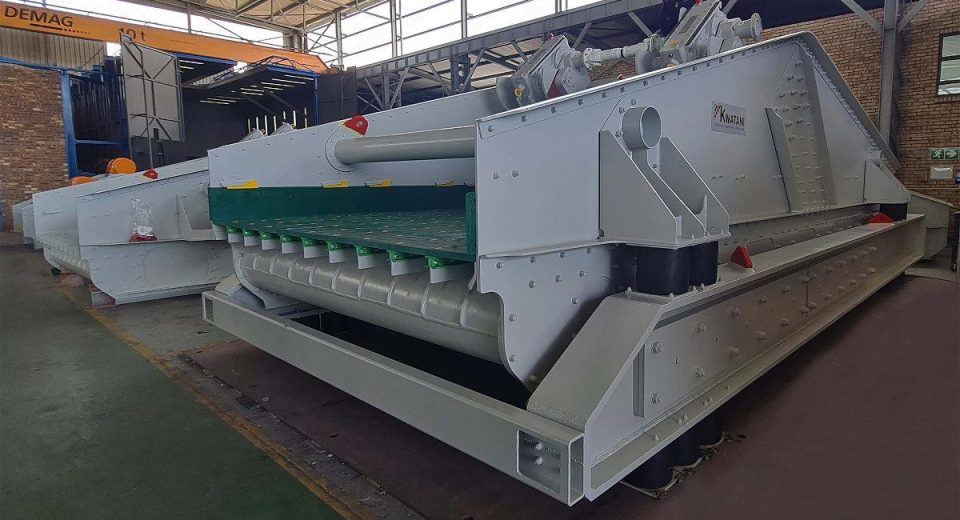Namibia’s bustling mining scene is seeing an exciting expansion and technological innovation at a leading gold mining operation, with Kwatani supplying five mill discharge screens – all custom designed and manufactured at its Gauteng facilities.
Kim Schoepflin, CEO of Kwatani, says her company has a long history in Namibia and a strong footprint across various commodities there – including an established presence at this gold mine. It has worked with the engineering, procurement and construction (EPC) contractor and the end-customer for two to three years on conceptualising the optimal solution.
“The mine is gearing up to increase its production by 50%, to take advantage of the strong gold price,” says Schoepflin. “Our role was to ensure that our discharge screens meet their exact process requirements – with our efficiencies of up to 95% – while delivering mechanical integrity for minimal maintenance downtime.”
The expansion includes the installation of two latest-technology mills – a high-pressure grinding roll (HPGR) and a vertical mill – which will boost production while reducing energy demand. Kwatani’s mill discharge screens, each measuring 3 m wide by 8 m long, will handle the coarse and fine material from the HPGR and the vertical mill. The company will also supply three silo feeders of 1,2 m by 2,5 m in size, to feed material from the silo to conveyors.
“Our screen design optimises the retention time on the deck, allowing for better screening and stratification,” she says. “Due to the volume of slurry and water sprayed onto the screens, the added retention time assists with better drainage at lower cut points.”
The coarse screens were designed at a decline, and feature a larger screening media aperture with higher amplitude and stroke. Together with lower speed, this achieves better screening efficiency for the coarser particles. The fine horizontal screens, with smaller aperture screening media for the finer feed, were designed with a higher speed and lower amplitude and stroke; this will optimise the screening efficiency of the finer feed to these screens.
She also highlights the attention paid to the isolation of the vibrating screens. In this case, Kwatani engineers selected rubber buffers, which have higher dynamic loads but are more suited to wet applications and screens with a heavier mass.
“The number and type of buffers were defined according to the mass of the screens,” says Schoepflin. “The selection of rubber buffers for larger screens also assists with start-up and shutdown time, allowing the screens to come to rest more effectively.”
For these five screens, Kwatani designed and supplied custom counter-balance frames to minimise the dynamic load to the plant infrastructure. The company’s screen technology includes designing its exciters in-house. This ensures that screens receive the necessary G-forces for optimal material stratification and screening, matching customers’ process requirements with the best possible efficiencies.
“To make sure our screens cope with the high capacity demands of modern processing plants, we rigorously test all units in our in-house testing facility before dispatch,” she said. “These units began their journey to Namibia at the end of November 2021, and our team will support the commissioning when the customer requires.”



